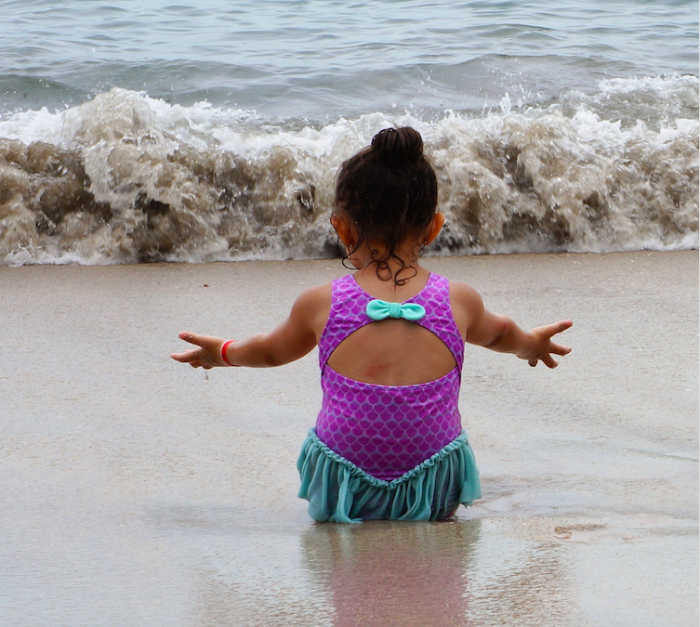My five-year-old daughter recently told a classmate that she wanted to kill herself.
Let me repeat that: my five-year-old said she wanted to kill herself. Her teacher and other school staff responded quickly. She was immediately taken to the school psychologist to see if she understood what she said and whether she had formulated a plan. If she’d had a plan, that would have meant that she had been seriously thinking about killing herself.
She did not have a plan, nor did she seem to understand exactly what she had said.
I was grateful that my daughter’s school did not dismiss what she said but instead took it seriously. Nonetheless, this event left me shaken and worried.
My daughter had always been a happy, loving, social, friendly, and excited child. Starting kindergarten, however, brought significant changes in her behavior.
She started having nightmares almost every night. She complained of stomachaches, especially around bedtime. If she couldn’t complete a school assignment or answer a question correctly, she would be hard on herself, going so far as calling herself stupid. She even hit other kids at school. Each of those behaviors by themselves might be considered “normal” for a five-year-old, but when looking at them collectively, I knew something was going on with her.
Turns out all of these behaviors are classic signs of anxiety. Of the 1.7 million kids who suffer from a mental health condition in the United States, 31 percent of them suffer from anxiety disorders. Anxiety is closely tied to depression, and if not addressed can lead to academic problems, behavioral problems, substance abuse, and even suicide.
Suicide is the 10th leading cause of death in the United States, and among 10 to 18-year-olds, it is the second leading cause of death. Of children who die by suicide, it’s estimated that 90 percent of them had a mental health condition.
I was determined to not brush off my daughter’s anxiety as just another thing she would grow out of. I wanted to not only help her feel less anxious but also to arm her with skills to address any stress or other challenges life will throw at her. So, I started doing my research. And I talked to a good friend who is a child therapist.
I started by just acknowledging her feelings and talking with her about the nightmares. I would tell her about the anxiety I felt as a child. The reoccurring dreams I had of someone chasing me, trying to do me harm. With these conversations, I slowly developed a connection with her so that she could understand she was not alone. I helped her see that these feelings are real.
Besides the talking, I tried out several strategies recommended by the professionals. Some worked great while others she was just too young for. There are five strategies that have helped our situation.
1. Addressing the nightmares. The nightmares were happening almost every night. She would wake up from a bad dream, come to our room in the middle of the night, and sneak into bed with my husband and me. The sleep interruptions were difficult on all of us. I read tips from the American Psychological Association on how to get your child to “Be the boss of their dreams.”
Every night at bedtime, we would talk about the dreams she would want to have instead of the dreams she had been having. We would talk about who she wanted in her dream and adventures they would go on. This did the trick. She stopped having nightmares and enjoyed the creative exercise of coming up with fun dreams every night.
At one point, she told me that she was not dreaming of the stories we were making up but that she was having wonderful dreams. That’s all that matters.
2. Calming the mind. My therapist friend talked to me about teaching my daughter simple breathing exercises. Deep breathing can help with calming the mind and help with jitters or even an upset stomach. I read a lot about teaching a child to learn to breathe deeply. There are even great children’s books on techniques to teach a child to breathe, like Starbright by Maureen Green.
Trying to teach my daughter to breathe deeply didn’t go so well. She actually was concentrating so much and thinking about breathing that her breathing became more rapid and I thought she would pass out from hyperventilating. So instead of talking to her about the breathing, I tried to use meditation as a way to calm her mind and her brain.
I use a great app, called Headspace, for myself, and within that app there are also guided meditations for children. She doesn’t always sit still through them (they are only one to three minutes), but she does look forward to this exercise every night and asks for it. There are other great apps that are dedicated just to teaching meditation to kids, including some breathing exercises. My daughter loves the “Stop, Breathe, and Think” kid’s meditation app.
3. Bedtime routine. We have always had a pretty typical bedtime routine, but we’re not always strict about following it every single night. As we started the meditation and the dream visualizations, we started having a regular nighttime routine, and bedtimes became easier. The routine includes story time, meditation, and dream visualization. She craves this routine, and if we stray from it at all, bedtime becomes difficult again.
4. Finding the “happy place.” Talking and opening up has also been great for my daughter. When she is complaining of a stomachache or is having separation anxiety (which she does frequently), I will try to just concentrate on her and talk with her. My therapist friend suggested I ask her to describe a happy place, a place that is real (or not real) where she feels happy.
To find this place, I ask her to think about a place she would like to go. When she tells me what that place is, I ask her to describe it in detail by asking her questions about her place. “Who is there with you? What do you do there? What are some of the colors you see?”
Her happy place just so happens to be a Costa Rican beach we visited last year. Who wouldn’t feel calm and happy in Costa Rica? The idea is that when she gets nervous and upset, she can use this happy place to calm herself down.
5. Advocate for your child. A lot of the issues my daughter was having started when she began kindergarten, so I felt it important to talk to her teacher. First, I wanted to understand what her behavior was like at school. Were there certain times of the day or certain activities that were causing her the most trouble? What was her behavior like most of the time, not just when she was acting out or complaining about stomachaches?
Second, her teacher is instrumental in helping to teach and raise my daughter. She is an important part of her life, so I wanted to develop a partnership with her. I wanted to make sure she understood my concerns and understood who my daughter was—that she wasn’t just another kid acting out.
I knew it was my job, as her mom, to advocate for her, to make sure that those who are spending a great amount of time with her truly understand her heart, who she is as a person, and her personal struggles.
Her teacher was great. We brainstormed together on some strategies to help my daughter. Her teacher talked to me about things she can do in the classroom, and I talked to her about my strategies on addressing her anxiety at home.
My daughter’s teacher is now a great advocate for my daughter. She is seeing her in a different light, and although she can’t always treat her differently or give my daughter special treatment, she does understand her needs and how to handle certain difficult situations. Having this support has been so critical for my daughter. She is doing better at school, is acting out less, and has developed this beautiful relationship with her teacher.
For now, these techniques are working for us, but if we ever get to the point where I feel like her anxiety is more than I can handle, I will go to a professional for help. This is what they are here for: to help when things are too big for you to handle on your own. I know firsthand the benefits of therapy and am open to giving that to my daughter.
As she grows, especially into the teen years, her anxiety may start to look different and she may be less responsive to me and my ideas. I know that if she doesn’t want my help, that there are others I can turn to who can help her.
Anxiety is becoming more and more common among kids, and how we deal with it is important. In helping our kids find strategies for calming their mind and using other mindful techniques, we can equip our kids with skills they can take into adulthood.
I don’t know what this early anxiety means for my daughter. It may be something she struggles with her whole life. Or it could be something that pops up at various times in her life. My hope is that no matter how anxiety might manifest in the future, she has the skills to deal with it in a healthy manner. And that she will feel like she can talk to me, or her dad, or someone else she trusts about any struggles she is facing.
For now, the work we have put in has her feeling better. We have our good days and we have our bad days. But the good days are happening more than the bad days. She is enjoying school and her teacher has seen some differences in her behavior. She is sleeping better and complaining less about stomachaches.
And the unexpected outcome is how much she really enjoys and craves the meditation. I know the benefits of a regular mediation practice and I really hope she continues to enjoy it as much as I do.
Below are a few great resources for parents:
>>Anxiety Disorders in Children brochure by the Anxiety Disorders Association of America
>> Data and information on mental health and related conditions by the Centers for Disease Control
>> How to handle anxiety disorders in schools the Anxiety Disorders Association of America
~












Read 9 comments and reply